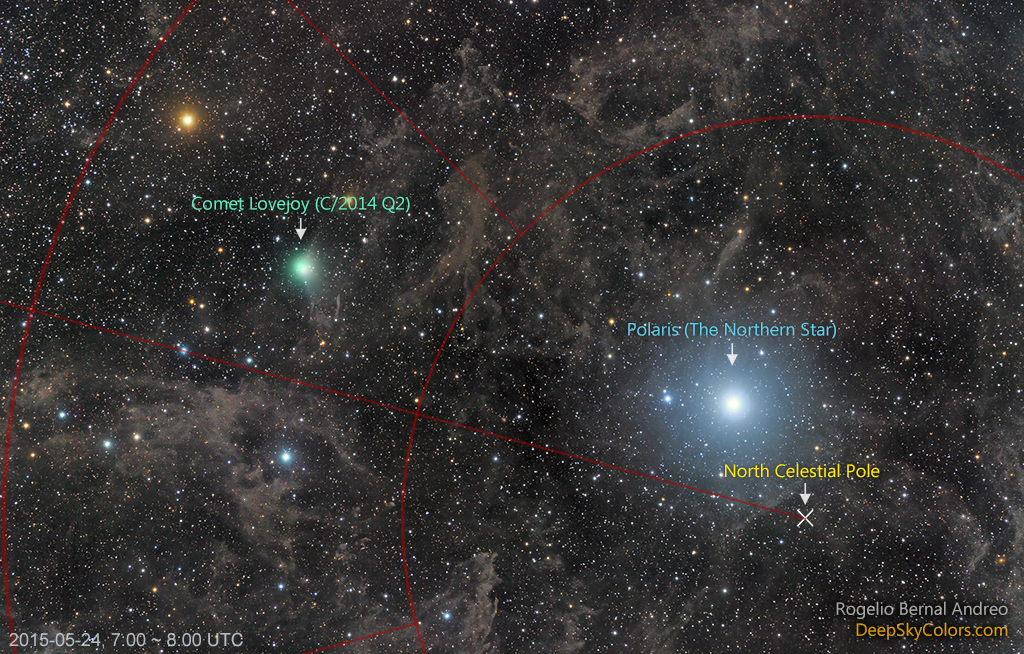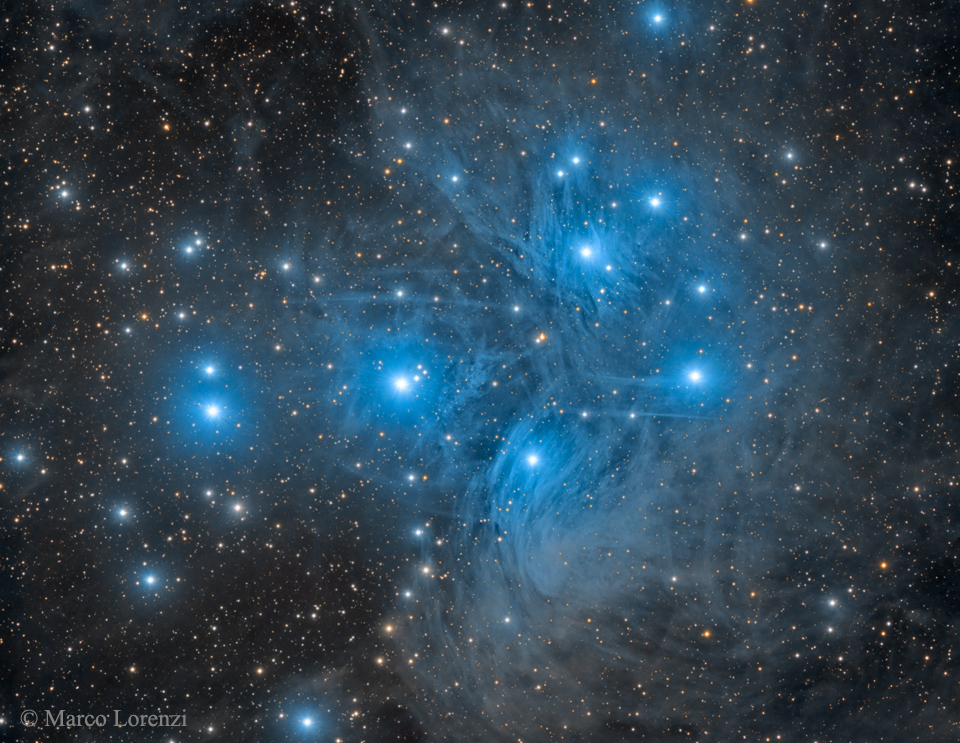wow very nice picture .
 |
 |
|
|||||||||||
 |
 |
||||||||||||
|
|
|
|
|
|
|
||||||||
 |
|
|
|
|
|
 |
|||||||
|
|
|
|
|||||||||||
|
|
|||||||||||||
|
|
|
|
|
|
|
|
|
|
|
|
|
|
|
Results 121 to 130 of 528
Thread: Space Pics v.3
-
05-24-2015, 05:06 AM #121
-
05-28-2015, 04:46 AM #122

Nearby Spiral Galaxy NGC 4945
Large spiral galaxy NGC 4945 is seen edge-on near the center of this cosmic galaxy portrait. In fact, NGC 4945 is almost the size of our own Milky Way Galaxy. Its own dusty disk, young blue star clusters, and pink star forming regions standout in the sharp, colorful telescopic image. About 13 million light-years distant toward the expansive southern constellation Centaurus, NGC 4945 is only about six times farther away than Andromeda, the nearest large spiral galaxy to the Milky Way. Though the galaxy's central region is largely hidden from view for optical telescopes, X-ray and infrared observations indicate significant high energy emission and star formation in the core of NGC 4945. Its obscured but active nucleus qualifies the gorgeous island universe as a Seyfert galaxy and home to a central supermassive black hole.
Image Credit & Copyright: Petri Kehusmaa, Harlingten Atacama ObservatoryI gather darkness to please me...
-
06-02-2015, 04:27 AM #123

Polaris and Comet Lovejoy
One of these two bright sky objects is moving. On the right is the famous star Polaris. Although only the 45th brightest star in the sky, Polaris is famous for appearing stationary. Once you find it, it will always appear in the same direction -- all night and all day -- for the rest of your life. This is because the northern spin pole of the Earth -- called the North Celestial Pole -- points near Polaris. On the left, about ten million times closer, is Comet Lovejoy, which noticeably changes its sky position by the hour. The featured image was taken last week. Officially designated C/2014 Q2 (Lovejoy), this disintegrating snowball is on a visit from the outer Solar System and will only appear near the North Star for a few more weeks. That should be long enough, however, for northerners with binoculars or a small telescope to see the greenish coma of this fleeting newcomer, perhaps with the help of a good star map.
Image Credit & Copyright: Rogelio Bernal AndreoI gather darkness to please me...
-
06-04-2015, 04:49 AM #124

NGC 2419 - Intergalactic Wanderer
Three objects stand out in this thoughtful telescopic image, a view toward the mostly stealthy constellation Lynx. The two brightest (the spiky ones) are nearby stars. The third is the remote globular star cluster NGC 2419, at distance of nearly 300,000 light-years. NGC 2419 is sometimes called "the Intergalactic Wanderer", an appropriate title considering that the distance to the Milky Way's satellite galaxy, the Large Magellanic Cloud, is only about 160,000 light-years. Roughly similar to other large globular star clusters like Omega Centauri, NGC 2419 is itself intrinsically bright, but appears faint because it is so far away. NGC 2419 may really have an extragalactic origin as, for example, the remains of a small galaxy captured and disrupted by the Milky Way. But its extreme distance makes it difficult to study and compare its properties with other globular clusters that roam the halo of our Milky Way galaxy.
Image Credit & Copyright: Bob FrankeI gather darkness to please me...
-
06-17-2015, 04:17 AM #125

M45: The Pleiades Star Cluster
Have you ever seen the Pleiades star cluster? Even if you have, you probably have never seen it as dusty as this. Perhaps the most famous star cluster on the sky, the bright stars of the Pleiades can be seen without binoculars from even the depths of a light-polluted city. With a long exposure from a dark location, though, the dust cloud surrounding the Pleiades star cluster becomes very evident. The featured exposure took over 12 hours and covers a sky area several times the size of the full moon. Also known as the Seven Sisters and M45, the Pleiades lies about 400 light years away toward the constellation of the Bull (Taurus). A common legend with a modern twist is that one of the brighter stars faded since the cluster was named, leaving only six stars visible to the unaided eye. The actual number of Pleiades stars visible, however, may be more or less than seven, depending on the darkness of the surrounding sky and the clarity of the observer's eyesight.
Image Credit & Copyright: Marco Lorenzi (Glittering LightsI gather darkness to please me...
-
06-20-2015, 04:20 AM #126
[B]

[/BHubble's Messier 5
]
"Beautiful Nebula discovered between the Balance [Libra] & the Serpent [Serpens] ..." begins the description of the 5th entry in 18th century astronomer Charles Messier's famous catalog of nebulae and star clusters. Though it appeared to Messier to be fuzzy and round and without stars, Messier 5 (M5) is now known to be a globular star cluster, 100,000 stars or more, bound by gravity and packed into a region around 165 light-years in diameter. It lies some 25,000 light-years away. Roaming the halo of our galaxy, globular star clusters are ancient members of the Milky Way. M5 is one of the oldest globulars, its stars estimated to be nearly 13 billion years old. The beautiful star cluster is a popular target for Earthbound telescopes. Of course, deployed in low Earth orbit on April 25, 1990, the Hubble Space Telescope has also captured its own stunning close-up view that spans about 20 light-years near the central region of M5. Even close to its dense core at the left, the cluster's aging red and blue giant stars and rejuvenated blue stragglers stand out in yellow and blue hues in the sharp color image.
Image Credit: HST, ESA, NASAI gather darkness to please me...
-
06-23-2015, 04:20 AM #127

Sharpless 308: Star Bubble
Blown by fast winds from a hot, massive star, this cosmic bubble is huge. Cataloged as Sharpless 2-308 it lies some 5,200 light-years away toward the constellation of the Big Dog (Canis Major) and covers slightly more of the sky than a Full Moon. That corresponds to a diameter of 60 light-years at its estimated distance. The massive star that created the bubble, a Wolf-Rayet star, is the bright one near the center of the nebula. Wolf-Rayet stars have over 20 times the mass of the Sun and are thought to be in a brief, pre-supernova phase of massive star evolution. Fast winds from this Wolf-Rayet star create the bubble-shaped nebula as they sweep up slower moving material from an earlier phase of evolution. The windblown nebula has an age of about 70,000 years. Relatively faint emission captured in the expansive image is dominated by the glow of ionized oxygen atoms mapped to a blue hue.
Image Credit & Copyright: Kfir SimonI gather darkness to please me...
-
06-23-2015, 04:37 AM #128
awesome pic, Capn K, thks...
"This is my rifle, this is my gun, one is for shooting the other for fun"...Army marching cadence
-
07-01-2015, 04:35 AM #129

Colorful Clouds Near Rho Ophiuchi
Why is the sky near Antares and Rho Ophiuchi so colorful? The colors result from a mixture of objects and processes. Fine dust illuminated from the front by starlight produces blue reflection nebulae. Gaseous clouds whose atoms are excited by ultraviolet starlight produce reddish emission nebulae. Backlit dust clouds block starlight and so appear dark. Antares, a red supergiant and one of the brighter stars in the night sky, lights up the yellow-red clouds on the lower center of the featured image. Rho Ophiuchi lies at the center of the blue nebula on the left. The distant globular cluster M4 is visible to the upper right of center. These star clouds are even more colorful than humans can see, emitting light across the electromagnetic spectrum.
Image Credit & Copyright: Markus Noller (Deep-Sky-Images)Last edited by Capt.Kangaroo; 11-04-2015 at 07:05 AM.
I gather darkness to please me...
-
07-01-2015, 11:47 AM #130
Great pic, Capn K....
"This is my rifle, this is my gun, one is for shooting the other for fun"...Army marching cadence
Similar Threads
-
RCU model pics
By crazed 9.6 in forum BuzzTV RemotesReplies: 25Last Post: 01-05-2024, 10:41 PM -
BuzzTV e1 - pics
By Ryu in forum BuzzTV EssentialsReplies: 0Last Post: 02-01-2021, 01:06 AM -
Zx Pics
By Capt.Kangaroo in forum Formuler ZxReplies: 17Last Post: 09-21-2018, 02:38 PM -
Space News/UFO's Etc...(Discussion/Pics/Vids)
By Capt.Kangaroo in forum Deep SpaceReplies: 678Last Post: 05-10-2018, 12:27 PM -
This is cool pics
By Marley in forum Chit Chat LoungeReplies: 0Last Post: 03-06-2018, 06:41 PM






 Reply With Quote
Reply With Quote

